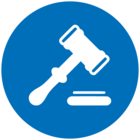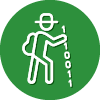Hello, when I click on my network internet access, I see othe people on there, how do I remove them or should I be worried?
thanks
cactus
Solved
I see other names/users on my personal network
Best answer by Ssherjj
Hello catus,@ wrote:
Hello, when I click on my network internet access, I see othe people on there, how do I remove them or should I be worried?
thanks
cactus
Welcome to the Community Forum,
Can I ask you if you are using a wireless connection because your router will pick up other network services from near by homes or apartments. AS being worried I wouldn't worry for reasons that I'm going to explain.
Make sure you have a secure password for your internet connection. When using a router it is so important to know that it provides a firewall between an untrusted network, such as the internet, and a trusted or safe network, such as the local network on which you have on your computers that are connected.
You also have Windows Firewall and Webroots Firewall and here is a KB explaining this here https://community.webroot.com/t5/Webroot-SecureAnywhere-Antivirus/Webroot-SecureAnywhere-Firewall-Co...
t's possible, though not very likely, that your neighbor could access your computers directly. I say that that's not likely because you would need to have something like remote desktop access enabled on your system.
Hope this helps with your concerns and if you have more questions then please let us know!
Best Regards,
Login to the community
No account yet? Create an account
Enter your E-mail address. We'll send you an e-mail with instructions to reset your password.





